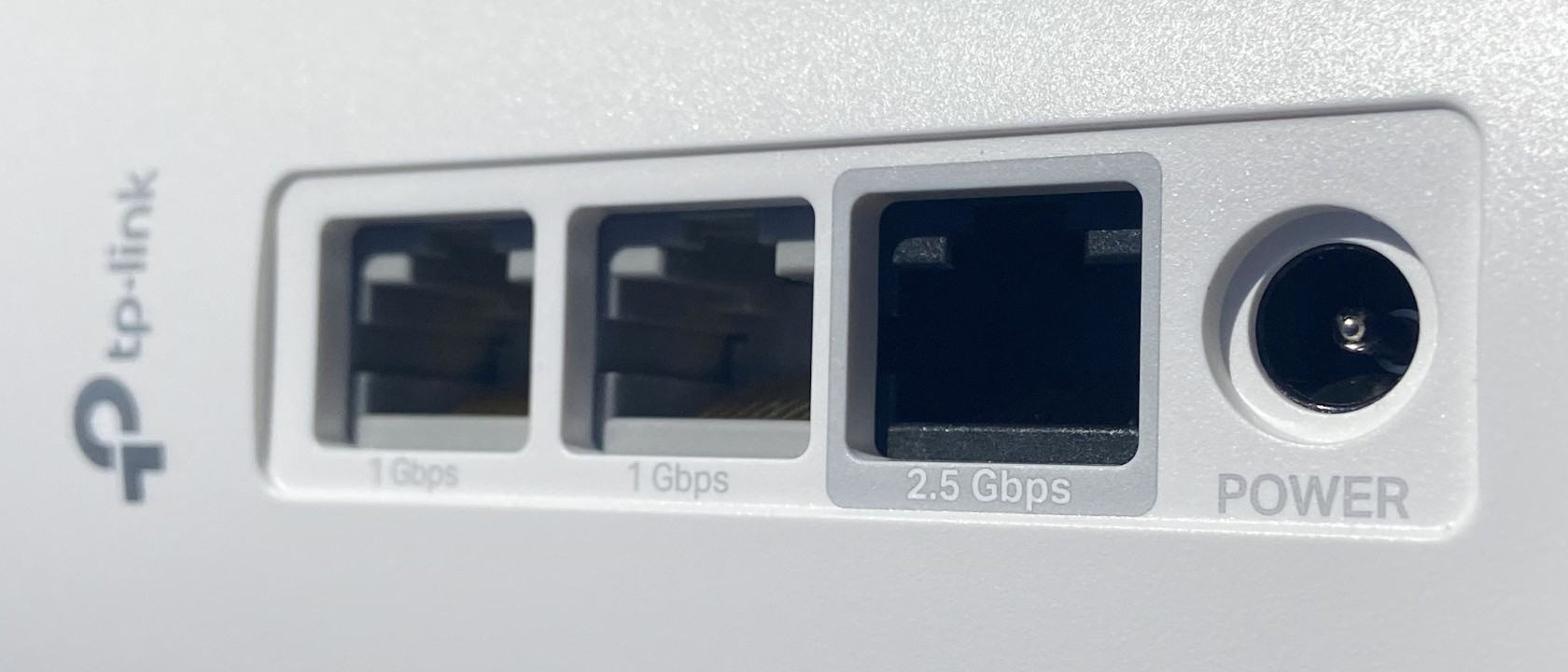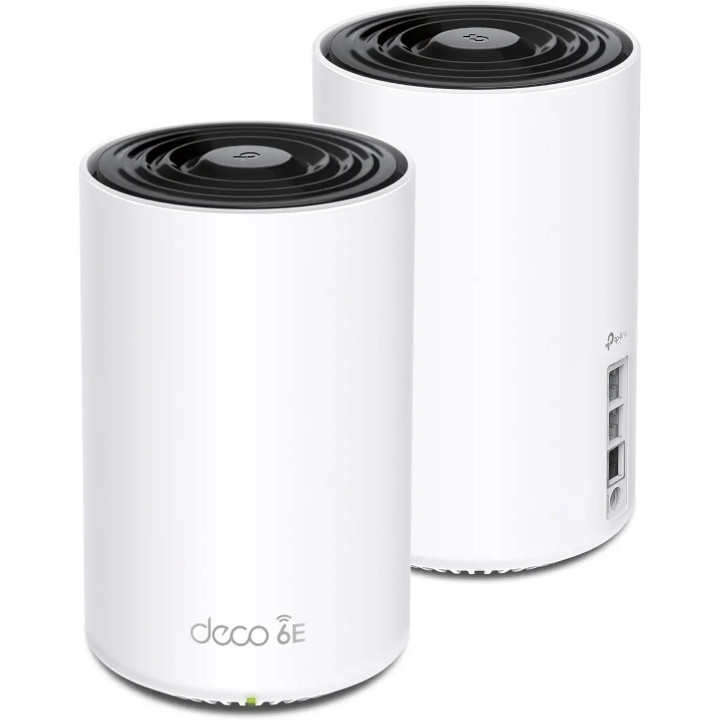Windows Central Verdict
TP-Link is offering an attractive mesh Wi-Fi solution to a particularly niche audience. If you subscribe to Multi-Gig internet speeds, own Wi-Fi 6E compatible devices, and still suffer from wireless dead spots around the house, then the Deco XE75 Pro is perfect. It might not benefit everyone now, but future-proofing for 6E is finally getting cheaper, and the 6GHz band at least provides a steady connection free from much interference.
Pros
- +
+ Multi-Gig internet shared to every room
- +
+ Wi-Fi 6E supports modern devices
- +
+ Deco app is easy to use
Cons
- -
− Gigabit internet or slower won't benefit
- -
− HomeShield subscription is steep
Why you can trust Windows Central
Deco mesh Wi-Fi sets from TP-Link have repeatedly proved their worth to me, solving the issue of weak wireless signals from my basic router. They work by beaming your traffic from one node to another, placing as many around the home as you need. There are various models and multipacks supporting different budgets and needs.
This new AXE5400 set is a cutting-edge double pack featuring the ultra-modern Wi-Fi 6E standard. Their design is familiar enough, but there are promises of superior wireless performance supporting the fastest Multi-Gig internet speeds in every room of your house. Is a tri-band mesh set worth the price for a 6GHz band or dedicated backhaul? I spent a weekend running tests for our TP-Link Deco XE75 Pro review.
TP-Link Deco XE75 Pro: Price and availability
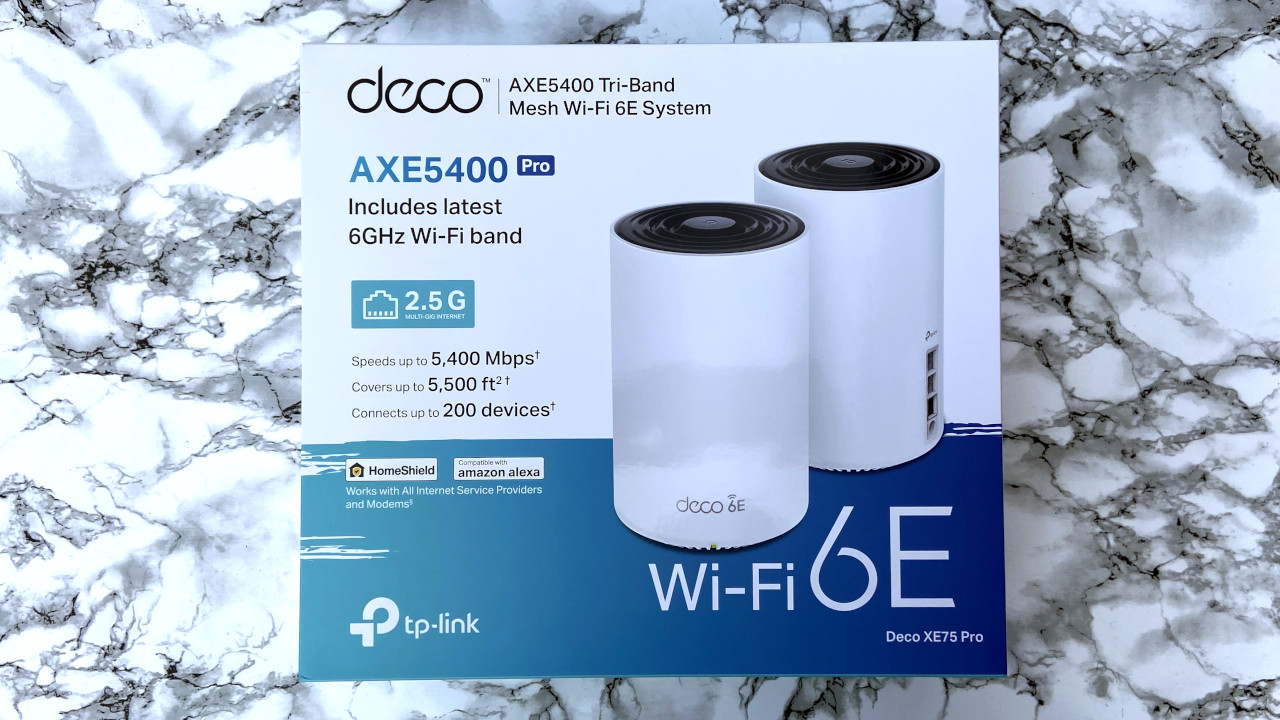
TP-Link sells the Deco XE75 Pro (AXE5400) whole-home mesh Wi-Fi 6E system 2-pack through the official TP-Link store and third-party retailers, including Amazon, Best Buy, and Walmart, for a $400 MSRP. It will also be available as a single or 3-pack post-launch with the same Ethernet RJ45 cable and AC power adaptors.
TP-Link Deco XE75 Pro: What's good
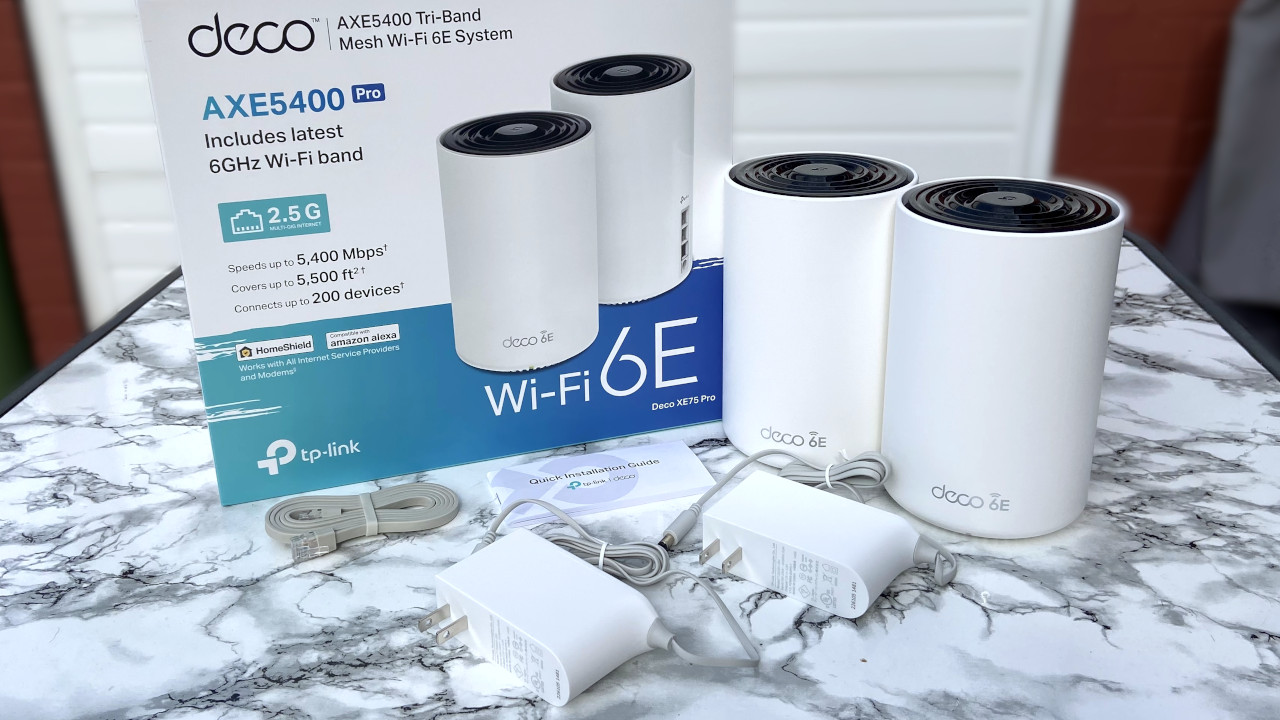
If the model name seems familiar, TP-Link has sent us very similar Deco units in the past. The standard TP-Link Deco XE75 did a decent job at extending our Wi-Fi but didn't quite provide a strong enough signal to compete with cheaper units. The main draw of the XE75 was support for the latest Wi-Fi 6E standard, just like this new Pro set which also offers a 2.5Gbps Ethernet port on every node.
TP-Link is advertising to a similar crowd with the XE75 Pro, those with Multi-Gig internet packages from a suitable ISP. Anyone hitting upwards of Gigabit speeds will need to have the appropriate networking hardware or run the risk of wasting potential bandwidth.
Connecting a compatible modem directly to the Deco via the 2.5Gbbps port should pair up with its 6GHz band to ensure high-speed internet reaches every room in our house with reduced interference. First impressions seem great since this Pro set features only improvements, so it's time to set everything up.
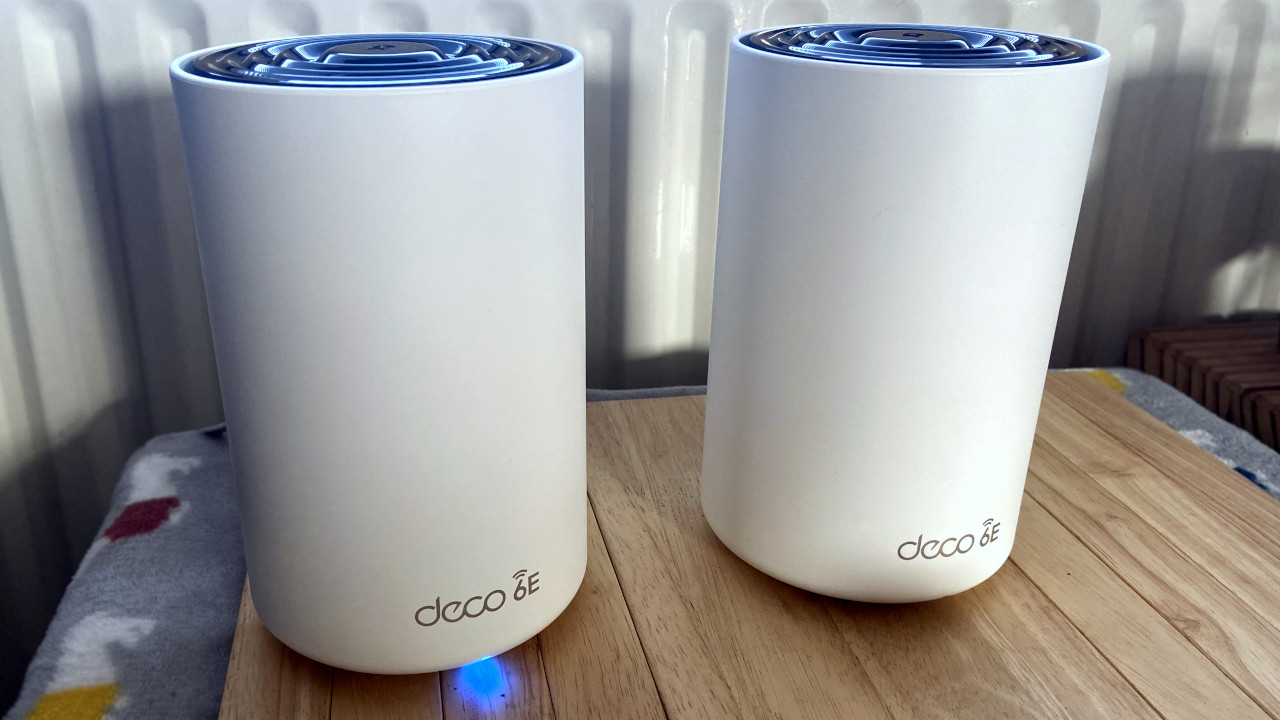
Fortunately, the fantastic TP-Link Deco companion mobile app is still regularly updated and is recommended for setting up the XE75 Pro. The process has never changed for their mesh range, starting with one Deco connected to your modem via the fastest available LAN/WAN port. Using the 2.5Gbps port on either, the primary Deco shows a pulsing blue light, indicating it's ready for setup.
It's perfect for connecting anything reliant on high-speed Ethernet without needing cumbersome extension cables.
Moving through the simple steps on the app, you can add the remaining Deco nodes, however many you need, up to a recommended maximum of 10. Since my home office is the farthest-reaching room in my home, it's the one that suffers the most from wireless dead spots.
It's where my Ethernet-only desktop PC is located, which previously meant running an unreasonably long LAN cable around the house.
Deco mesh Wi-Fi units support Ethernet backhaul, and with 2.5G LAN ports on each node, I can connect wired devices in any room and take advantage of their support for Multi-Gig speeds. It's perfect for connecting wireless tablets, consoles, and anything reliant on high-speed Ethernet without needing cumbersome extension cables.
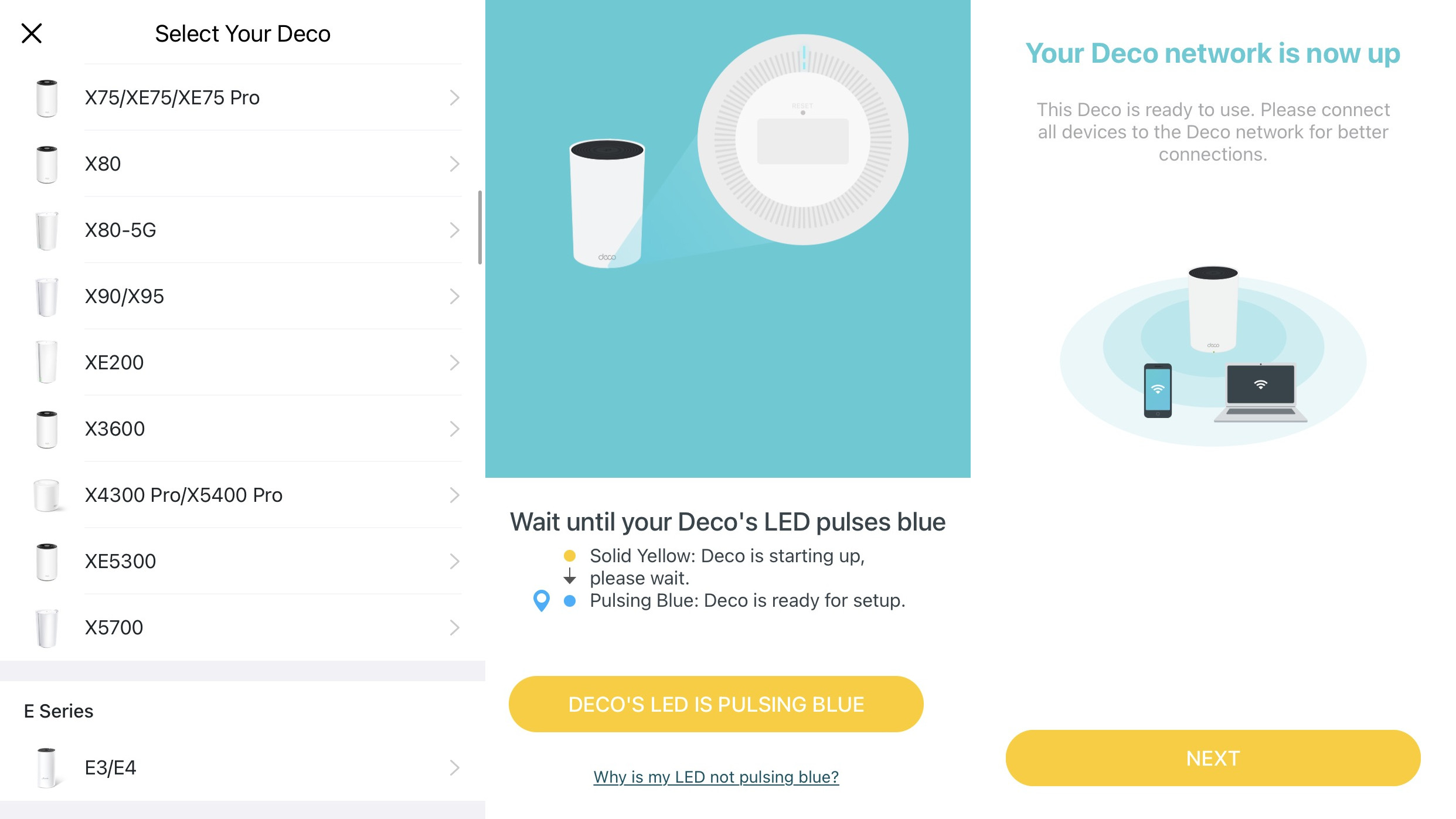
Since our flimsy internet barely hits anything higher than 100Mbps downstream traffic, we usually stick to the more appropriate TP-Link Deco X55 set with only two nodes. With that basic setup, the signal is strong enough to support our meager ISP and decent LAN transfers between different computers in our home. If the Deco XE75 Pro can at least match that, there can only be performance improvements elsewhere.
Sticking to our usual method of using open-source software iPerf, we can stress test the Deco set by running multiple transfers over various devices. Since its six streams offer plenty of bandwidth across this mesh network, it should perform well. After finishing up the companion app setup process, I set up wired and wireless devices in every room of the house, using as many variants of Wi-Fi bands as possible.
As expected, the results were fantastic. I ran a server from a desktop PC connected directly to the secondary Deco via the remaining 2.5G port since the first is reserved for the modem. Using my iPhone 11 to connect specifically to the 5GHz band and an older laptop hooked up to 2.4GHz, other phones were left to automatically select the best available signal.
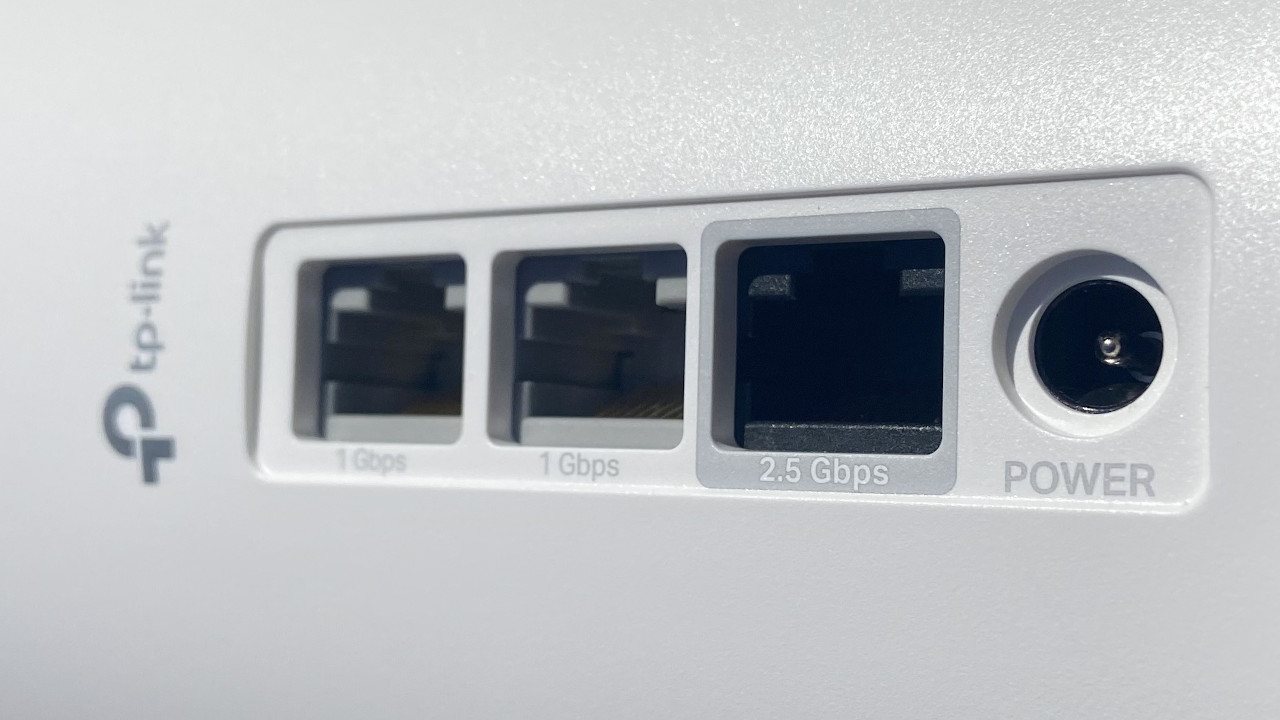
With all devices streaming various demanding media, including 4K video from YouTube and the highest quality available on Spotify, an iPerf client test with six parallel streams managed a steady 752Mb/s bandwidth from my office desktop PC.
Six parallel streams managed a steady 752Mb/s bandwidth from my office desktop PC.
The two Deco XE75 Pro units are located roughly 25 feet from one another, separated by the ceiling and one room across, so this performance is respectable.
Running client tests from my iOS devices resulted in 690Mb/s on average when I stood in the same room as either Deco. Standing outside in the street, roughly 25 feet away and through more brick walls, I could still yield a decent 314Mb/s on the phones.
My iPhone 11 is limited by its hardware, capped at around 877Mb/s, so we're not far off.
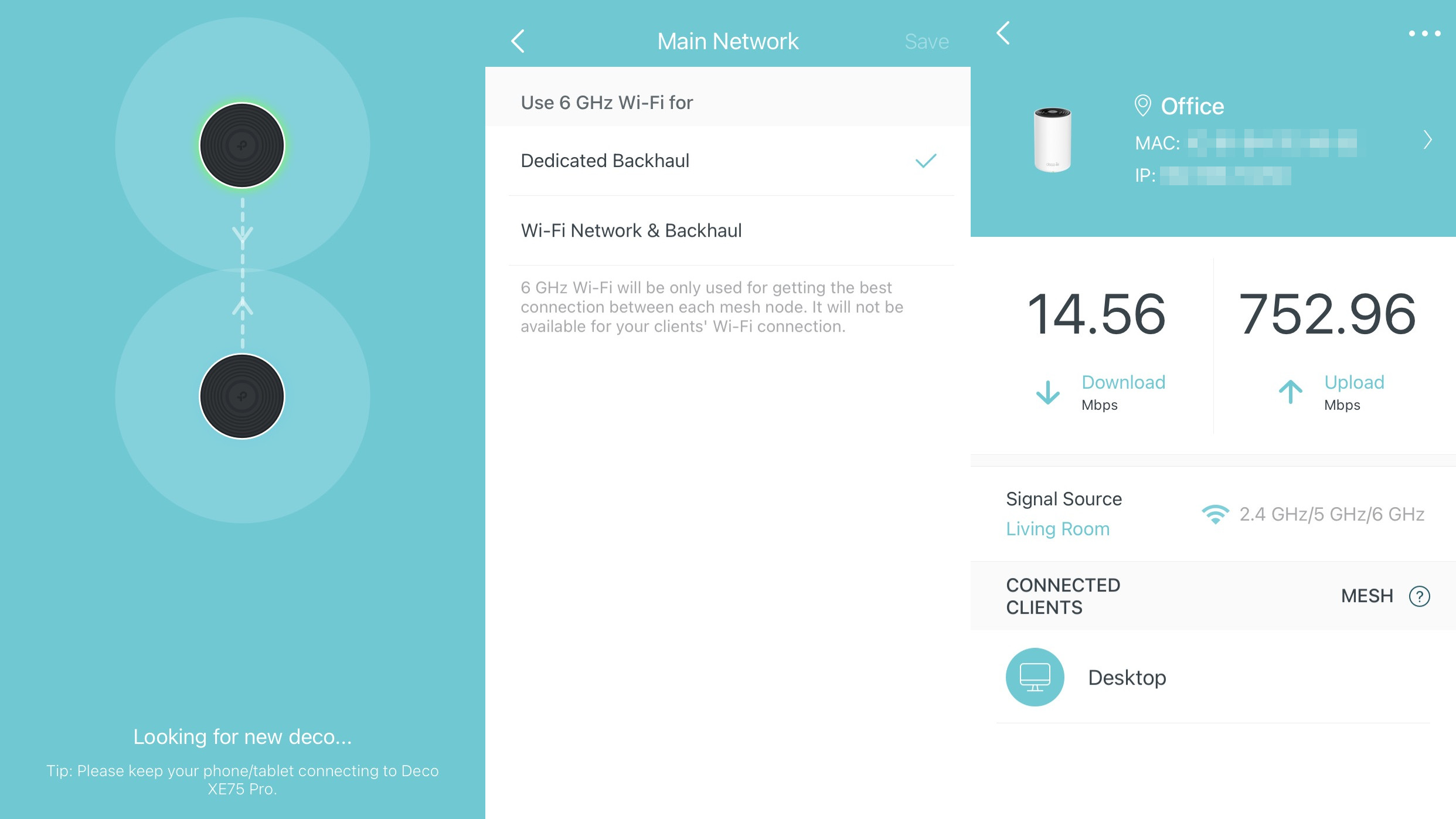
Anyone with a cutting-edge phone that supports Wi-Fi 6E (via Android Central) could enjoy more of this ultra-fast standard, but using the 6GHz band as a dedicated backhaul helps to keep the traffic between each Deco running smoothly. Even the latest Xbox Series X console still uses Wi-Fi 5, so the list of compatible 6E devices is still relatively slim.
Considering the Pro uses the same 1.7GHz quad-core CPU as the original Deco XE75, it makes sense to see similar numbers from testing. The big temptation with this upgraded model is including a 2.5Gbps Ethernet port on each node, supporting internet packages exceeding Gigabit speeds if you're fortunate enough to access them where you live.
TP-Link Deco XE75 Pro: What's not so good
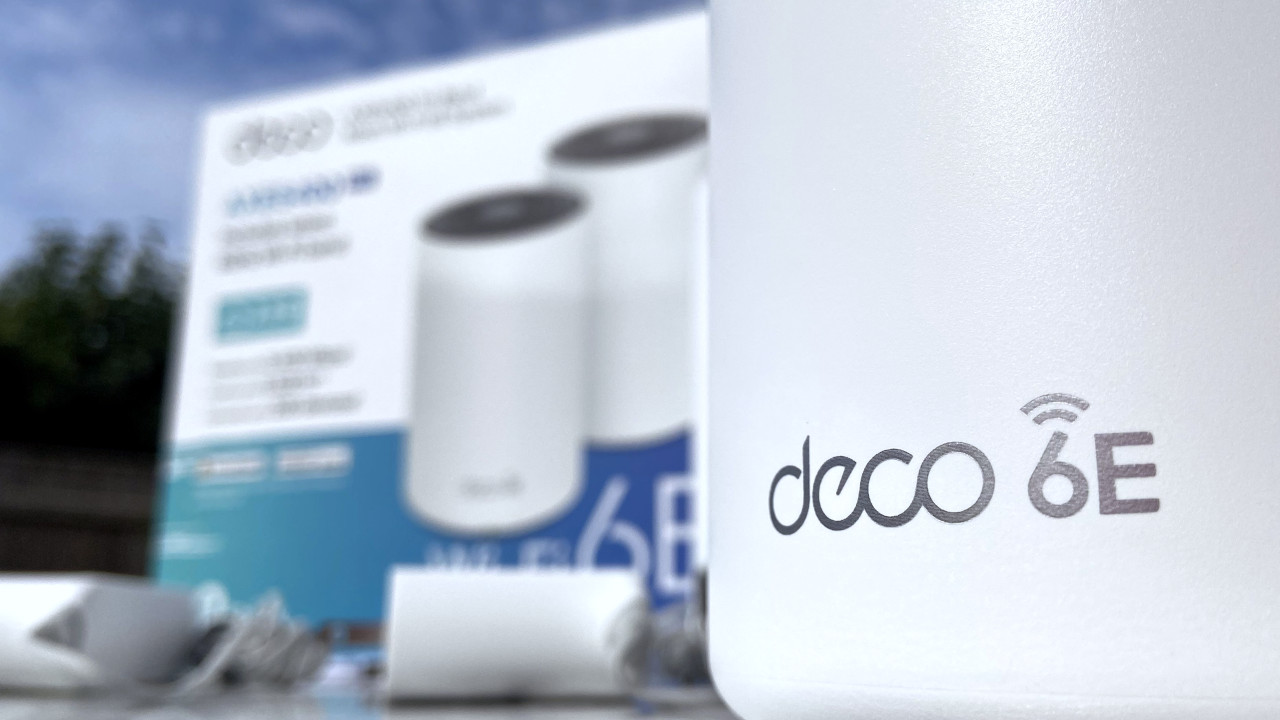
Wi-Fi 6E is still relatively young, and there aren't too many devices ready to take full advantage of it. TP-Link offers methods to future-proof your home with mesh Wi-Fi sets like this Deco Pro and affordable routers like the fantastic Archer AXE75. Unfortunately, most of the same headaches found with other Deco models persist here.
Each unit's power cord could be longer, especially when placement is key to a reliable wireless network. I have to use an extension cord with my home office Deco because it's just a step too far away from the closest outlet. It's minor, but AC adapters are far from the most expensive part of this package.
TP-Link still pushes a premium HomeShield subscription where they can. Anyone looking for more than essential network management and diagnostics will be asked for extra cash at $6 a month, and that doesn't convert properly to the UK, where you're asked for £6 for the same privileges. It's frustrating to keep locking protection against potential network attacks behind a paywall.
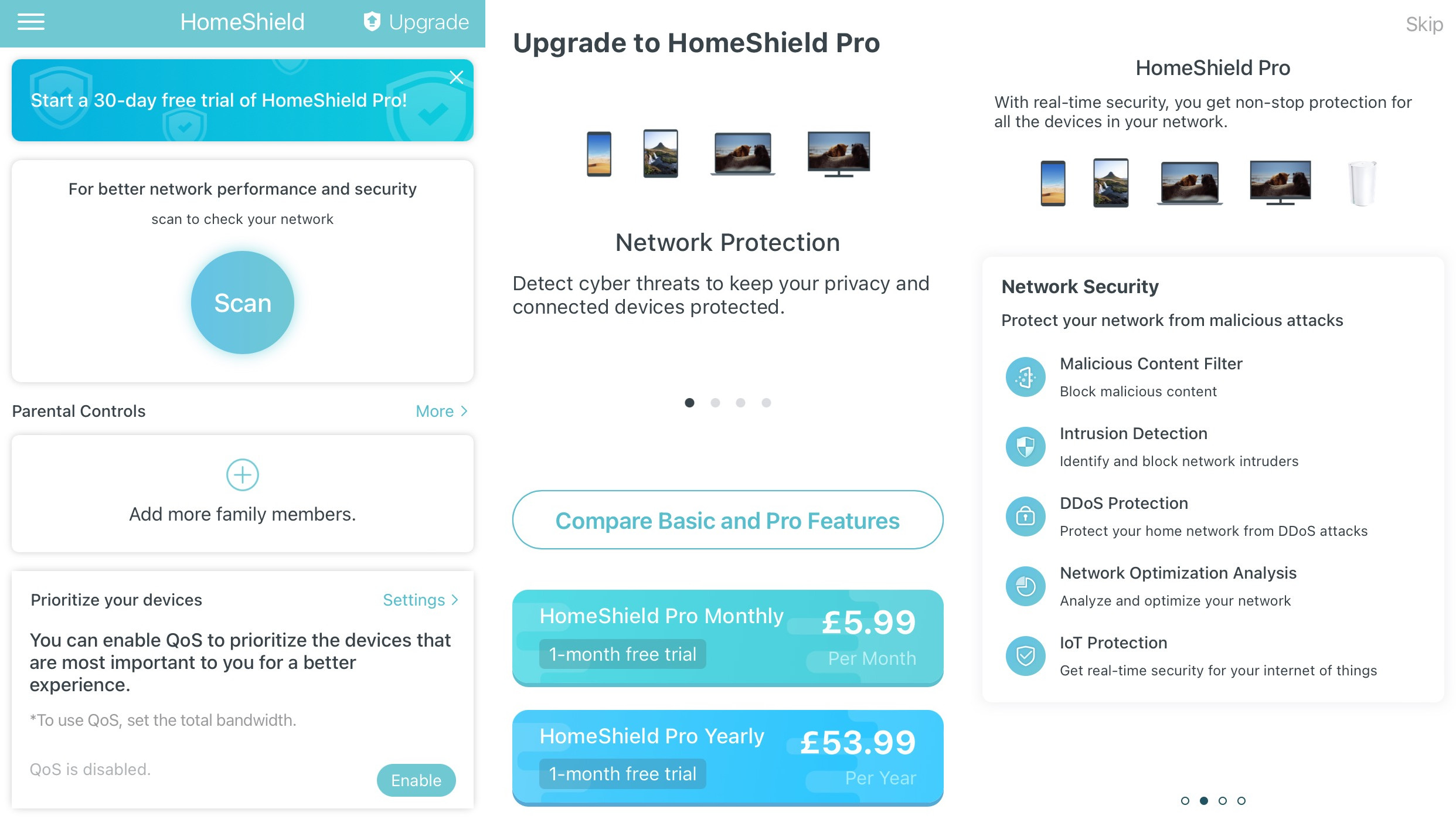
There are still no USB ports on the Deco, which prevents network-attached storage (NAS) from connecting in the usual fashion. Printers must remain attached to a specific device or rely on their (usually shoddy) Wi-Fi connection. Not many people disdain wireless printers as much as I do, and mesh Wi-Fi can remedy printing headaches when USB ports are available, so it's a shame to miss out here.
Don't be surprised if visitors mistake this Deco for a smart speaker and start barking commands at it.
The Deco XE75 Pro looks a little strange, but I won't dock it any points for that. Many mesh Wi-Fi units can pass for faux-Bluetooth speakers, easily fitting in any modern home.
Still, the original XE75 and this Pro variation look more like a decorative smoke fountain. Considering the ridiculous sci-fi aesthetic adopted by many other networking accessories, these Deco aren't exactly ugly, but the cylindrical blocks stand out with nothing to show off except a tiny LED status light.
Don't be surprised if visitors mistake this Deco for a smart speaker and start barking commands at it, and be sure to keep infants away from the cables. We learned that the hard way. Luckily, the reset button can't be pressed without a tiny pin, so a complete disaster is easier to avoid.
TP-Link Deco XE75 Pro: The competition
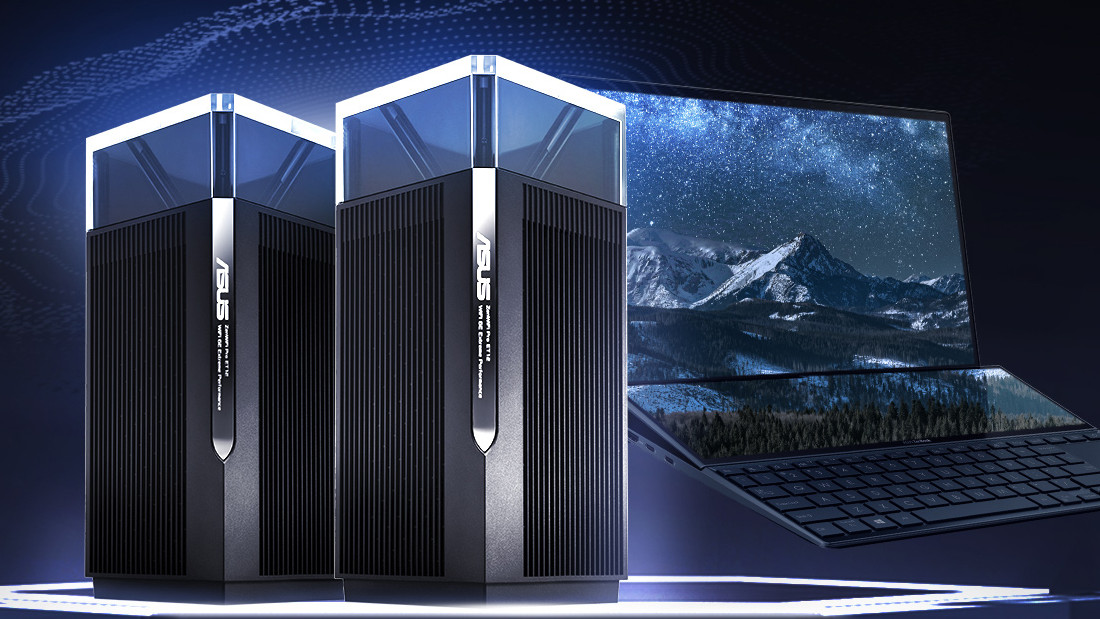
There aren't many competitors matching the specifications of the Deco Pro XE75 exactly. ASUS offers the ZenWifi Pro ET12 2-pack with Wi-Fi 6E support and 2.5G Ethernet ports for a hefty $900 MSRP. Its AXE11000 line rate exceeds the Deco Pro, thanks to extra internal antennas and a general improvement to hardware. A $500 increase is a lot to ask for additional bandwidth, so it's a tough sell for ASUS.
Netgear's Orbi range of mesh Wi-Fi includes the RBKE963, a 3-pack minimum offering with Wi-Fi 6E support and the same AXE11000 line rate as ASUS. The Orbi units aren't identical, with the base unit featuring a mighty 10Gb WAN port, beating out both TP-Link and ASUS, but you're looking at a cool $1,500 MSRP for the privilege.
If you're willing to drop Wi-Fi 6E in favor of regular Wi-Fi 6 but want to keep the Multi-Gig Ethernet ports, TP-Link's Deco X4300 Pro is a dual-band mesh 3-pack available for $400. Gaining an extra node is tempting for the same price, but only if you're willing to lose out on the cutting-edge wireless standard.
TP-Link Deco XE75 Pro: Should you buy?
You should buy this if ...
- Your internet exceeds Gigabit speeds
- You have wireless devices supporting Wi-Fi 6E
- You struggle with dead spots in your wireless network
You shouldn't buy this if ...
- You have no use for Multi-Gig networking
- You have no Wi-Fi 6E compatible devices
- You use USB-powered NAS drives
An upgrade to its standard Deco XE75, TP-Link delivers 2.5G Multi-Gig ports on each unit, supporting ultra-fast internet around your home. Reaching desktop PCs and other wired devices that would otherwise be out of range now extends to anything compatible with the latest Wi-Fi 6E standard, solving the issue of wireless dead spots along the way.
If you don't have an ISP package exceeding Gigabit speeds, or any wireless hardware supporting Wi-Fi 6E, you won't see the full range of benefits from this Deco XE75 Pro. Check our roundup of the best mesh Wi-Fi router systems if that's the case, especially if you need to use USB-attached NAS drives that aren't compatible with this set.

Ben is a Senior Editor at Windows Central, covering everything related to technology hardware and software. He regularly goes hands-on with the latest Windows laptops, components inside custom gaming desktops, and any accessory compatible with PC and Xbox. His lifelong obsession with dismantling gadgets to see how they work led him to pursue a career in tech-centric journalism after a decade of experience in electronics retail and tech support.
